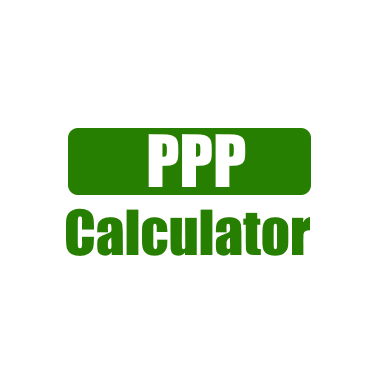
PPP Calculation and Estimation
PPP Calculation and Estimation
Value family members are first registered for individual things inside every essential heading for each sets of economies looked at. Essential headings are the most minimal collection level in the ICP use arrangement for which express public records use loads can assessed. Rudimentary buying power equalities (PPPs) are then determined for every fundamental heading in light of these cost family members. They accordingly collected to work out PPPs for every arrangement total.PPP Calculation and Estimation
Assume three economies — A, B, and C — cost two sorts of rice under the rice essential heading. For every sort of rice, there are three cost family members: PB/Dad, PC/Dad, and PC/PB. The essential heading PPP for each sets of economies can processed straight by taking the mathematical mean of the cost family members between them for the two sorts of rice. This is a two-sided correlation. The PPP between economies B and A can registered by implication: PPP C/A × PPP B/C = PPP B/A. The utilization of both immediate and circuitous PPPs is a multilateral examination. This implies that the PPPs between any two economies impacted by their particular PPPs with different economies in the correlation. Subsequently, an adjustment of the blend of economies remembered for the correlation will likewise change the PPPs between any two economies.
Multilateral PPPs
Various strategies can utilized to register multilateral PPPs. The decision of technique depends on two fundamental properties: transitivity and base nation invariance. PPPs are transitive when the PPP between any two economies is a similar whether it figured straightforwardly or in a roundabout way through a third economy. PPPs are base nation invariant in the event that the PPP between any two economies is the equivalent no matter what the decision of base economy.
One more property fundamental the computational moves toward get Worldwide Examination Program (ICP) PPPs is that economies dealt with similarly no matter what the size of their GDP (Gross domestic product). Nonetheless, this property doesn’t fulfill the additivity necessity. Additivity happens when the amount of the genuine uses of the essential headings comprising a total equivalents the genuine consumptions in view of the PPPs for the total. Added substance techniques have the hindrance of giving more weight to the general costs of the bigger, more created economies. Thus, the genuine consumptions of unfortunate economies become misleadingly bigger and draw nearer to the genuine uses of rich economies. This known as the Gerschenkron impact. For the purposes of ICP PPPs, for example, for neediness investigation, non-added substance techniques that keep away from the Gerschenkron impact liked.
Fixity is one more idea that decides the techniques utilized. The fixity idea implies that the overall volume — the proportion of genuine uses — between any sets of economies in a district continues as before after the provincial outcomes have consolidated into a bunch of worldwide outcomes including all economies.
Elementary PPP calculation PPP Calculation and Estimation
The PPP assessment process starts with the taking part economies gathering costs for things browsed a typical rundown of unequivocally characterized things. These normal records incorporate both provincial things, estimated in a particular locale, as well as worldwide things, evaluated in all ICP districts. These two arrangements of costs cover the entire scope of conclusive labor and products remembered for Gross domestic product: family utilization uses, government utilization consumptions, and gross capital development uses.
Two essential strategies utilized in the ICP to compute fundamental heading PPPs. The primary methodology depends on the Jevons file made transitive by the Gini-Éltető-Köves-Szulc (GEKS) technique, which changes respective PPPs into multilateral PPPs. The other strategy utilizes a relapse model known as the country item faker (CPD) technique, which straightforwardly gauges PPPs that are transitive and base-country invariant in one stage. The outcomes acquired by the two strategies are something very similar assuming that each economy costs each thing. The two techniques can adjusted to incorporate weighting at the thing level.
Reference PPPs
For a few essential headings, use information exist, however value assortment is viewed as too costly or tedious or the value information are inconsistent. For these essential headings, reference PPPs are utilized, and they can be ordered as follows:
Cost based reference PPPs, explicit or unbiased
Market conversion scale reference PPPs.
Cost based reference PPPs structure most of all reference PPPs utilized. They depend on the PPPs of other fundamental headings at which costs gathered. These PPPs alluded to as unambiguous reference PPPs. They might be the PPPs for a solitary fundamental heading or a normal of the PPPs for a few essential headings.
Market conversion scale reference PPPs utilized for the accompanying four fundamental headings: net buys abroad, acquisitions less removals of resources, commodities of labor and products, and imports of labor and products.
PPP aggregation
Whenever PPPs registered for every essential heading for all partaking economies inside a district, they are utilized as contributions for the more elevated levels of total utilizing the GEKS strategy. Essential heading PPPs are first weighted utilizing economy A’s loads (Laspeyres file), and afterward weighted again utilizing economy B’s loads (Paasche record). Each record gives a weighted normal of the PPP between economies An and B. To keep up with balance, the mathematical mean taken of the two accumulated PPPs for each sets of economies in the examination. The outcome is a Fisher list. For each sets of economies, the multilateral GEKS PPP is the mathematical mean of the immediate and roundabout Fisher lists.
PPP linking
At the worldwide level, provincial PPPs connected to shape a worldwide arrangement of PPPs and proportions of cost and volume family members. To connect the local fundamental heading PPPs for each taking part economy, interregional connecting factors determined in view of the costs of worldwide things gathered in all ICP districts.
The GEKS accumulation technique, with additional rearrangement of territorial volumes as per an economy’s local volume shares (known as the country collection with rearrangement [CAR] method), utilized to acquire genuine consumptions (henceforth alluded to as volumes) and amassed PPPs with provincial fixity. All economies in the standard ICP areas took part at the same time and similarly in the worldwide total utilizing the GEKS strategy.

Imputing PPPs for non-participating economies PPP Calculation and Estimation
Despite the fact that non-partaking economies represent a little portion of the world economy and total populace, they genuinely must be remembered for any extensive estimation of the size of the world economy or of worldwide neediness.
The technique utilized for crediting PPPs for nonparticipating economies utilizes two relapse models, one in light of the cost level file (PLI) for Gross domestic product and the other in view of the PLI for individual utilization consumption by families, including non-benefit organizations serving families (NPISHs). The two relapses assessed mutually utilizing the “apparently irrelevant relapse” strategy. The expected illustrative factors are the accompanying: Gross domestic product per capita in US dollars in light of market trade rates, imports as a portion of Gross domestic product, sends out as a portion of Gross domestic product, and the age reliance proportion. Sham factors expected for the Sub-Saharan African economies, the Eurostat-OECD PPP Program members, island economies, and landlocked economies. Association terms of Gross domestic product per capita in US dollars in light of market trade rates and the spurious factors additionally required.
Interpolating annual PPPs PPP Calculation and Estimation
For the years between reference years, at present, somewhere in the range of 2011 and 2017, PPPs determined in view of a methodology in which fundamental heading PPPs first added between the reference years and consequently amassed utilizing the standard GEKS strategy. Also, territorial PPPs between the reference years, where available,6 are consolidated utilizing the Vehicle system. The subsequent yearly PPPs maintain similar properties of base-country invariance and fixity as the PPPs from reference year correlations.
The information expected to build yearly PPPs included worldwide PPPs for the two reference years; provincial PPPs between the reference years, where accessible; public records deflators and buyer cost files; public records consumptions at current costs in neighborhood cash units; market trade rates; and populace.




